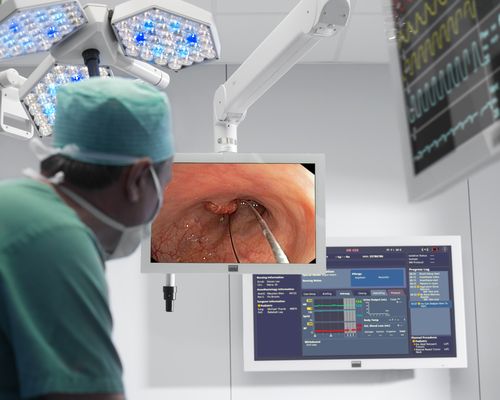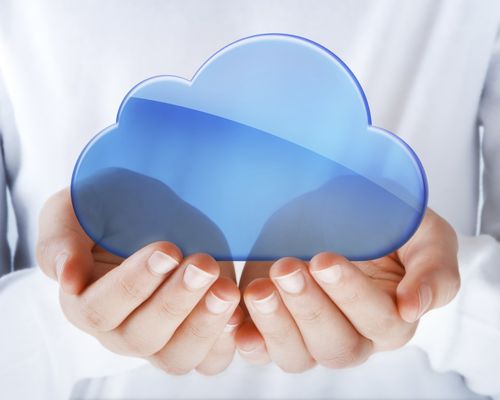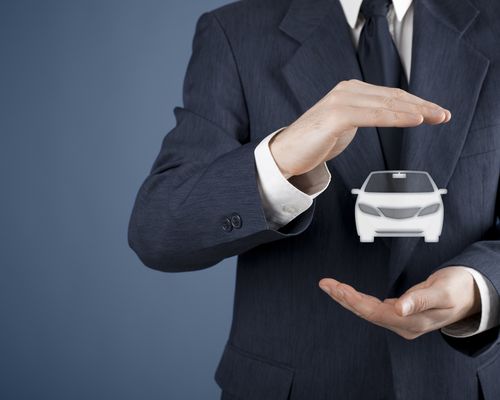CO- SUMMIT 2015
Dedicated to the theme ‘Smart Industry: impact of software innovation’, the seventh edition of the Co-summit will take place at the Berlin Congress Center in Germany on 10-11 March 2015. Jointly organised by ARTEMIS Industry Association and ITEA, the conference will showcase international speakers from industry and policy making, a high-level panel discussion, and an exhibition of leading European R&D&I projects.

SMART INDUSTRY
Highlighting the impact of software innovation on global industry, the 2015 Co-summit acknowledges the groundbreaking advances in technology that are bridging the real and virtual worlds, focusing on areas such as smart mobility, smart cities, sustainability, healthcare and wellbeing.
In decades to come, it is expected that digital- and software- based initiatives will increasingly provide opportunities that benefit the R&D&I landscape, enabling advanced technologies – such as human-machine interfaces – that will change the face of industry. This year, the Co-summit will explore how industry is being revolutionised by innovation, looking at developments such as advanced robotics technologies capable of communicating detailed information required during production, creating an unprecedented cohesion in previously fragmented manufacturing processes.
The event will honour projects of the future – forward- thinking endeavours that recognise new ways of working, such as the Internet of Things, a network of automated communication and information exchange. Selected as the host country, the conference recognises the progress made in Germany by Industry 4.0, which combines technological, industrial and social perspectives to create new business models incorporating cyber physical systems and autonomous decision-making processes, with applications in healthcare and energy. Expanding its breadth to all of Europe, the Co-summit acknowledges the best, most pioneering projects being undertaken across the continent through a prestigious awards ceremony held during the event.

IN THE SPOTLIGHT
As joint organisers, Rudolf Haggenmüller, ITEA Chairman, and Heinrich Daembkes, President of ARTEMIS Industry Association, provide an insight into the inner workings and key themes of the forthcoming Co-summit event.
WHY WAS THE THEME ‘SMART INDUSTRY: IMPACT OF SOFTWARE INNOVATION’ SELECTED FOR THE 2015 CO-SUMMIT?
RH: This year’s Co-summit on smart industry is a wonderful way to kick off the EUREKA Cluster programme ITEA 3. Last year, we published our joint ARTEMIS-ITEA Vision 2030 report with a focus on the impact of software innovation – and smart industry is an excellent example of its effect on global industry. After the steam engine, the assembly line and the success of digital technology, we are observing the fourth Industrial Revolution: the merging of real and virtual worlds.
The development and smart application of powerful industrial software is critical to the global competitiveness of the European manufacturing and process industry – and innovation is the key to mastering many of the associated challenges.
HD: We envision a revival of production in Europe, specifically smart production, for which large investments are needed in hardware, software and ICT in general to intensify automation. Short-run, highly individualised products with short delivery times cannot be easily supplied by overseas production centres, as they involve long logistic processes.
The theme of the Co-summit indicates key trends in this area as: software is becoming the key enabling driver for success; software-based features are the differentiating factor in competition; and software is the enabler that connects the different elements of the entire value chain, allowing significantly increased efficiency.
WHAT DEVELOPMENTS HAVE THERE BEEN AT ARTEMIS-IA AND ITEA SINCE THE 2013 CO-SUMMIT? ARE THERE ANY PARTICULAR PROJECTS AND SUCCESS STORIES YOU WOULD LIKE TO HIGHLIGHT?
RH: In 2014, we successfully started ITEA 3. During the first half of 2014 the ITEA Office, in close cooperation with public authorities, planned several promotional activities in different countries to kick off the new programme. In March 2014, the ARTEMIS-ITEA Vision 2030 paper was officially presented to and discussed with then EC Vice-President Neelie Kroes. The key message delivered was that European industry needs a balanced approach to electronics and software innovation. The message and the Vision 2030 report were well-received. As one of the conclusions from this discussion, the intention was expressed of organising a high-level working session on concrete challenges for digital technology identified by actual end users and customers – for example, hospitals or smart cities.
Project Outline (PO) Preparation Days 2014, held in Amsterdam in September 2014, successfully opened the first ITEA 3 call for projects. Compared to the last ITEA 2 calls, the PO harvest for the first ITEA 3 call was quite successful, with 34 POs submitted, representing 4,619 person years from 22 different countries (including Canada and Taiwan as new participants). We observed some important trends, such as significant involvement from France and Turkey; an important share of involvement from the Netherlands, Germany, Finland, Spain, Romania and Belgium; and a growing involvement of SMEs in manpower.
The thematic landscape of this call covers an increasing number of POs on software engineering, health and wellbeing, smart industry, surveillance and security, which remain important topics. Smart cities and the Internet of Things have been growing as research trends over the past few years, and are still delivering a significant number of proposals. Retail and agriculture are two new topics, which are very prominent in this call and are indicative of a new future for ITEA – one that involves more traditional industries that have been impacted by the digital transition.
HD: As a successor programme to the ARTEMIS Joint Undertaking (ARTEMIS-JU), the EC had planned to combine the activity areas of ARTEMIS-JU and ENIAC-JU (on nanoelectronics, running in parallel to ARTEMIS-JU) with those on smart systems as covered by the European Technology Platform on Smart Systems Integration (EPoSS). A new JU called Electronic Components and Systems for European Leadership (ECSEL-JU) was thus created and launched in July 2014.
ARTEMIS-IA participated in many meetings with the Commission, Member States, the Association for European NanoElectronics ActivitieS (AENEAS) and EPoSS to make this happen, representing the embedded software and cyber-physical systems aspect in this new construction. Based on a first version of the Multi Annual Research and Innovation Agenda (MASRIA 2014) for nanoelectronics, embedded/cyber-physical systems and smart systems, the ECSEL-JU organised its first call in 2014, resulting in 12 fairly large projects being selected for tripartite funding by the Commission and engaged Member States.
THE CO-SUMMIT EMPHASISES THE IMPORTANCE OF COLLABORATIVE WORK IN R&I – AND YOUR JOINT INTRODUCTORY SPEECH STANDS AS AN EXAMPLE OF THIS APPROACH. WHAT WILL BE YOUR KEY MESSAGES AT THIS YEAR’S EVENT?
RH: In 2012, the EC set the goal of boosting manufacturing’s share of value added to Europe from 15 to 20 per cent by 2020. This would result in an increase of industrial employees by 6 million and an increase of annual industrial value added by €500 billion. To reach this goal, we have to strengthen our software innovation power through increasingly globalised strategies; by including customers and end users in our software innovation projects; with a comprehensive approach addressing product and service innovation; and by addressing talent development in our projects on company and country levels – smart industry needs smart people.
The above aims exactly describe the ITEA 3 improvement plan 2015. The high-level recommendation from our Co-summit 2013 in Stockholm is more valid than ever: companies and countries should double their investments in ITEA 3.
HD: The impact of software innovation on revenue and jobs is enormous and growing every year. The requirements and boundary conditions on ICT are continuously increasing. This has to do with security, reliability, non-hackability, 24/7 operation, power consumption, system compatibilities, electromagnetic compatibility and many more aspects. The global importance of these facts is not yet sufficiently recognised at all levels. At present, we are still very much hardware orientated in our R&D efforts. We need to adjust the focus more towards the relevant new drivers in the systems design and software areas. This will be decisive in our daily competition with the other regions of the world.
ARE THERE ANY ELEMENTS OF THE CO-SUMMIT 2015 THAT YOU ARE PARTICULARLY LOOKING FORWARD TO?
RH&HD: During the entire Co-summit, visitors will be able to roam around the project exhibition of around 75 European leading R&D&I projects and witness the impact of software innovation. Both ITEA and ARTEMIS projects will showcase their objectives and results in terms of innovation, business impact and exploitation. Be sure to expect exciting stories and state-of-the-art live demos! Furthermore, the open forums will give room to pick up exciting new topics and discuss them among experts, preparing future common activities.
THE HOSTS
Rudolf Haggenmüller and Heinrich Daembkes introduce the organisations responsible for the international Co-summit conferences.
ITEA:
RH: ITEA is the EUREKA Cluster focused on Software-intensive Systems and Services (SiSS), with projects in application domains such as:
- Mobility
- Healthcare and wellbeing
- Sustainability
- Smart cities
- Safety and security
- Smart industry
ITEA stimulates projects in an open community comprising large industry, SMEs, universities, research institutes and user organisations. Founded in Europe and based on the EUREKA principles, the programme is open to participants worldwide.
Each year, ITEA issues a call for projects starting with a two-day brokerage event. Each call follows a two-step procedure, in which the quality of the project proposal is evaluated and improved, finally leading to the selection of high-quality project proposals that receive the official ITEA label. Following the EUREKA structure, each ITEA project partner can apply for national funding in their own country; allowing a project idea to attract financial support from all participating countries.
ARTEMIS-IA:
HD: ARTEMIS-IA has its roots as the European Technology Platform (ARTEMIS ETP) on Embedded and Cyber-Physical Systems. In 2007, the ETP was converted into an Industry Association with paying members, a chosen Steering Board from its members, and a General Assembly as its highest decision body. As a private partner, the Association today represents its members – industry, SMEs, universities and research institutes – in ECSEL-JU. ARTEMIS-IA became a member of the tripartite ARTEMIS-JU with the EC and interested European Member States as members, which is now also a constituent member of the new ECSEL-JU. In 2014, ECSEL-JU was founded as a follow-up undertaking.
ARTEMIS-IA continuously promotes the R&I interests of its members to the EC and public authorities of participating states. It continues the work of the ARTEMIS ETP and is therefore responsible for the ARTEMIS Strategic Research Agenda (SRA) on Embedded & Cyber-Physical Systems, which reflects the R&I needs of the industry. The Association strongly believes that the continued success of the embedded and cyber-physical systems sector in Europe depends on one coordinated, pan-European strategy.
ARTEMIS-JU organised six yearly calls for projects in 2008-13, for co-funding by the Commission and Member States in which the projects took/take place. The total eligible costs of all ARTEMIS-JU projects of the six calls have been €1.1 billion. As ARTEMIS and ITEA have partly overlapping communities, both aiming at achieving similar targets, it was decided to organise the so-called Co-summit from 2008 onwards.

ITEA 3:
The business and innovation landscape is changing to accommodate advanced and disruptive approaches to R&D on a global scale. In 2030, the planet’s population is due to reach 8 billion people, only 23 per cent of whom will live in Europe and the Americas. There is therefore a need to recognise the importance of digital technologies that will unite nations and enhance industrial productivity.
The initiatives found within the ITEA framework involve large and small players in competitive industries, such as healthcare, communications, automotive and aerospace. The programme is renowned for its track record of successful projects, achieved within a community of almost 1,500 partners in over 30 countries around the world.
Now in its third instalment, known as ITEA 3, the programme builds on the foundations of ITEA 1 and 2, and:
- Represents an agile organisation with an ISO 9001:2008 quality management system in place to ensure adaptability to forthcoming changes in industry
- Created a living roadmap to support the launch of new ITEA projects as a continually updated baseline for innovation
- Developed strong partnerships with other EUREKA Clusters, ARTEMIS as well as national competitiveness clusters
- Restructured its annual call calendar to ensure that there is the possibility of moving from project idea to project start within a 10-month period
ITEA ambitions include:
- Innovation
- Business impact
- Fast exploitation
- Seizing the high ground, to ensure that European industry continues to be at the leading edge worldwide
- Happiness, for the community and the added value of project results to improve the lives of end users
PROJECT AWARDS
The three winners of the 2015 ITEA Awards of Excellence, representing R&D&I in the fields of business impact and standardisation, will present their projects during the ceremony:
- EASI-CLOUDS: Extendable Architecture and Service Infrastructure for Cloud Aware Software
- MEDIATE: Patient-friendly medical intervention
- SAFE: Defining safer automotive systems architecture
The Recognition Awards Ceremony is held every year to honour successful projects with outstanding contributions to their industries. Awards will be presented to the following ARTEMIS-JU projects finalised in 2014:
Low-Power Multi Core:
- ASAM
- PRESTO
Human-Machine Interface (HMI):
- ASTUTE
- D3COS
Ennergy Efficient Communities and Electric Car:
- ENCOURAGE
- IoE
Safety and Security:
- nSHIELD
eHealth:
- High Profile
High-Reliability (HI-REL):
- MBAT
The Internet of Things:
- WSN-DPCM
The first ECSEL projects will start in winter 2015, and will be presented during the 2017 Co-summit.
THE SPEAKERS
Experts from across the European innovation landscape will be presenting at this year’s Co-summit:
Opening speeches:
- Dr-Ing Herbert Zeisel, Head of the Directorate ‘Key Technologies for Growth’, Federal Ministry of Education and Research (BMBF)
- Khalil Rouhana, Director for ‘Components & Systems’ in DG Connect, European Commission
- Bruno H Moor, Chairman, EUREKA High Level Group, Delegate of the Swiss Ministry of Economic Affairs, Education and Research
Keynote presentation:
- Dr Jutta Schneider, Director, eDrive & Software Technologies, Daimler AG
STREAMLINING THE PROCESS
Smart industry challenges include:
- Increasing productivity
- Reducing energy and resource consumption
- Increasing flexibility
- Decreasing costs
- Reducing time to market
- Satisfying demand for higher product variety and product individualisation

Related projects
MEDIATE
Patient Friendly Medical Intervention
EASI-CLOUDS
Extendable Architecture and Service Infrastructure for Cloud-Aware Software
SAFE
Safe Automotive soFtware architEcture




